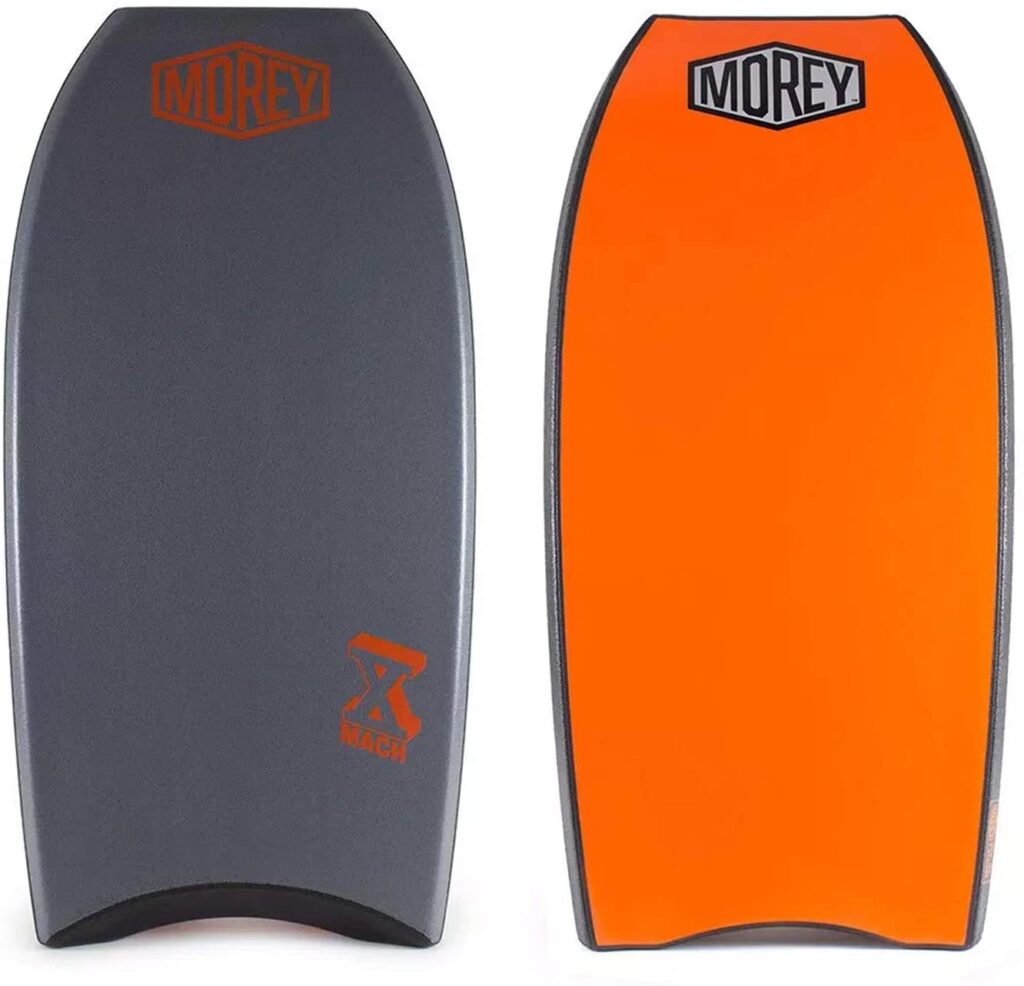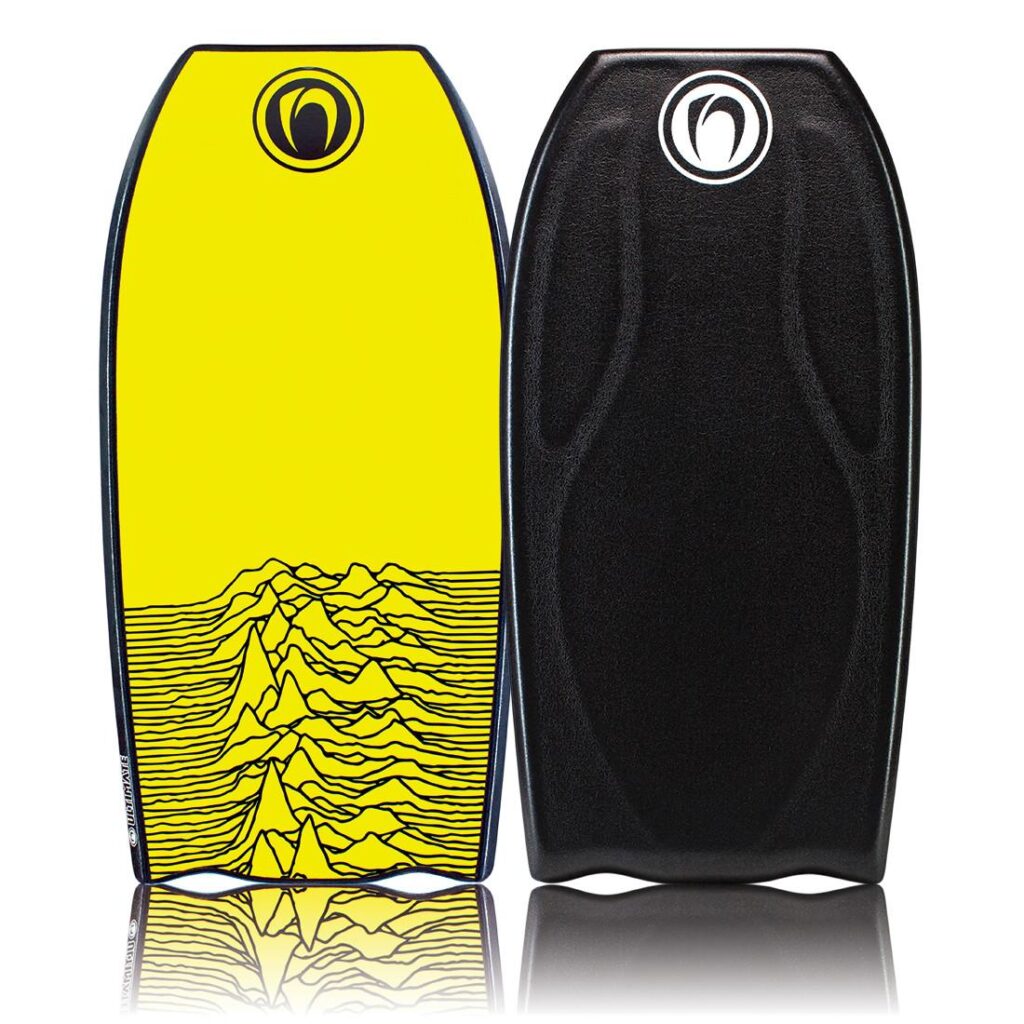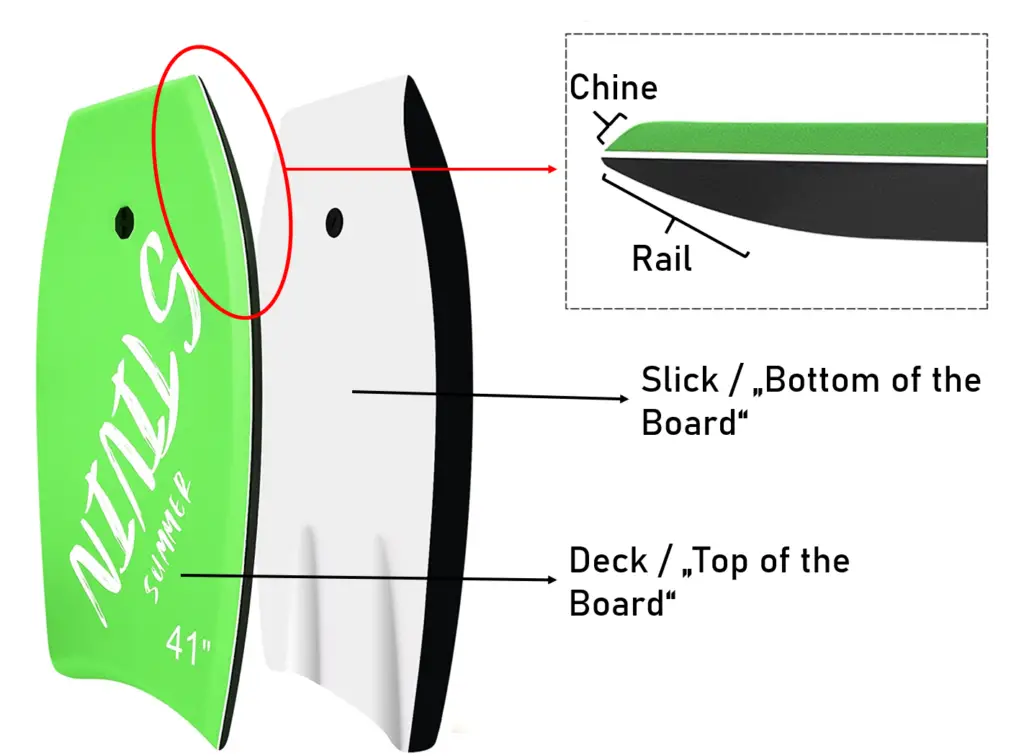The Bodyboard Buying Guide Every Entry Level and Expert Bodyboarder Should Read Before Going Out To Buy One
This buying guide may be meant for beginners of this very popular boarding sport, but it may have something for advanced bodyboarders as well. We will take a closer look at the different bodyboards available for the bodyboarder and how they can help to make it more fun for all.
You need to look out for so many things before jumping in and buying a bodyboard to go out and ride the waves. Choosing the right bodyboard will increase the fun factor and also help to master the sport quickly and easily without too much effort.
So let’s take a look at the different boards and how to choose the right one that will suit you the best.

- The Bodyboard Buying Guide Every Entry Level and Expert Bodyboarder Should Read Before Going Out To Buy One
- What Beginners Need To Know About Bodyboarding
- How To Choose a Bodyboard
- Different Material Used In The Construction Of Bodyboards Cores
- BODYBOARD MESH MATERIALS
- Bodyboard Stringers
- A Quick Summary
- Conclusion
What Beginners Need To Know About Bodyboarding
Before you go out and buy a bodyboard, read this section first so you can have a working knowledge to help you. Finding the right bodyboard might become a daunting task for the beginner with many different brands and models at your disposal.
To get some confusion out of the way, bodyboards are also known as boogie boards; many professionals love to call them fondly by that name. Boogie Boarding was invented by Tom Morey in 1971 and was known by that name for a long time before it was changed to bodyboarding.
You should also know that a bodyboard is stronger and more expensive than the original boogie board. New technology and a lot of changes in the bodyboard that evolved from the old form are responsible for the ultimate change it went through.
How To Choose a Bodyboard
Finding the right board for your body build may take some time and effort, but do not be discouraged by that. The right bodyboard that fits your overall body size and build will increase the fun and lower the learning curve.
You will find that the effort spent on finding the right bodyboard will be worth the while, considering the benefits you get from that. We will start off with the different types of bodyboards available on the market and the materials used in their construction.
Types of Bodyboards
Types of Bodyboards
There are a number of important factors you need to keep in mind when it comes to choosing the right bodyboard for you. Sizes of the bodyboard, materials used, durability, flexibility, and overall performance are some of the things to look for in a perfect bodyboard for you.
Bodyboard Size
Bodyboard Size
To have the best control over your bodyboard, the overall size of the board is probably the most important factor to keep in mind. If the board is too large for you, you will not be able to fully control it while you are riding the waves out there.
Bodyboards are, in nature, much shorter than surfing boards and are made in a square shape to make them better to control. Look here for the right size of board for your build.
There is an easy way to determine the right bodyboard size for you:
Pick the board up and hold it against your body right under your chin; the tail of the board should reach to your knees. Also, keep in mind that the heavier people out there will benefit from a broader and thicker board to improve overall buoyancy.
The average size of bodyboards comes in a range of 33 inches and up to 46 inches in length for the different body sizes. While 38 inches is the average bodyboard size used by adults, all smaller sizes are best for kids for the best control.
If the board is too short for you, it will not cover your body and leave you with very little control. If you are too heavy for the board, it will sit very low in the water and reduce buoyancy, which will hamper overall balance.
Remember that you will need your legs to kick the water, so it should not cover too much of your body. Bigger boards will handle much better in lower waves while thin and shortboards will give you more speed on bigger waves.
When looking at how to choose the right bodyboard for you, it becomes necessary to look at the different parts as well.
Bodyboard Tail
Tail Of the Bodyboard
Bodyboards do not come with many different tail designs included like it is with surfboards, but it still impacts the board. This is basically the opposite side of the bodyboard from the nose and helps with overall maneuverability when riding the waves.
There are only two types of tails for bodyboards (Crescent Tail and Bat Tail), and we will take a look at them in detail to see what difference it makes.


Bat Tail
The bat tail comes in two variants. The first is the normal bat tail which is a bit looser in the water. The normal bat tail is, in general, much less stable, and that is not very good for beginner-level bodyboarders.
The flat bat tail design is a combination of the bat tail and the crescent tail and is very popular among professional bodyboarders. It is also a very good design for those who prefer to ride the waves on their board in the drop-knee style.
Crescent Tail
This tail design is also available in two variants, first, the crescent tail is great for a smoother ride. It also provides much more stability for the bodyboard and is great for those who ride in the drop-knee style.
Thes Crescent Tail style is also the most common and popular among experts and entry-level bodyboarders. And that’s also the tail variant we suggest 99% of the Bodboarders should use.
The Clipped Crescent Tail Board is the second variation of the crescent tail makes use of more squared-off edges, while the classic crescent style uses rounded edges. This style also makes the bodyboard more maneuverable but does not have as much hold as the classic crescent style has.
Bodyboard Rail
The Rail
The sides of your bodyboard are also known as the rail and are used to steer the board into the direction you want it to go. There are two rail configurations available for the bodyboard that have a huge impact on your board and its capabilities.
The side edges of a bodyboard are made of two sections; the one part at the bottom is the rail that runs through the water. The other part of the edge is the chine which comes around to the back of the bodyboard and wraps the top part.

The different configurations are presented in the form of a percentage; the first part is the rail and the second the chine. If you see the numbers 50/50 or 60/40, it presents the combination of rail and chine present on the edge of the board.
With more rail than chine, you will have better control over the board where more rail is in contact with the water. With a 60/40 design, you will have more hold, but you may lose a little speed when riding the waves.
On the other hand, a 50/50 configuration will give you less hold but your board will glide faster through the water. There is also the double rail design which means there are two layers of foam running down the edges of the bodyboard.
With the double rail design, your board will be a bit stiffer and durability is added to withstand harsh treatment. So, if you are looking to have a better board, it is wise to look for one with a double rail design.
It may also add some speed to your bodyboard, which will become quite notable when you gain more experience with bodyboarding.
However, if you do not have special requirements like maximizing the speed, you should go with a Bodyboard with a 60/40 rail ratio.
Bodyboard Nose
Bodyboard Nose
This is the front-most tip of the board when you lie down on your bodyboard to ride the waves. The typical lying down style of riding the waves on a bodyboard is by holding the nose with one hand.
Your other hand will hold on to the side edge of the board to give you the ultimate control while you are bodyboarding. When you place your hand on the nose while grabbing it, you will find small indentations on the underside of the board.
This is to provide you with better gripping options while you are in the lower position and riding the waves. These little bumps on the nose of the bodyboard will help you to have better control over different types of waves.
It will help you to steer the bodyboard in the direction you want it to go and provide great control on high waves. It will also give you better control and maneuverability in the lower surfs to keep your direction true all the time.
You may find that some of the lower-order entry-level bodyboards do not come with a lot of these bumps included. This means that you will be better off investing in a slightly more expensive board, even if you are a total beginner.
It is also much safer for beginners to have a bodyboard that provides better control over the board. Keep that in mind when it is time for you to choose the board you want to use to ride waves and have fun.
Bodyboard Deck
The Deck Of Your Bodyboard
This is the part of the bodyboard where you ride on and have all the fun while riding low and high waves. The construction of the deck of your bodyboard will have a significant impact on your overall bodyboarding experience and your grip.
The main goal of bodyboarding is to stay on top of your board when you ride. So, choosing the right board is also about having the best deck to keep you on top of the board.
Bodyboard decks are also made from different types of materials that will have an impact on your overall wave-riding experience. We have a special section where we will take a look at the different types of materials and what impact they may have.
There are some entry-level bodyboards that are made from types of materials that tend to be a bit slippery. These boards will need some waxing to help the beginner bodyboarder stay secured on top of the board.
You can find some useful tips about bodyboard waxing here to help you look after and care for your board. The bodyboard deck should not be too stiff, which will cause it to be more slippery, and you may struggle to stay on top.
Better quality bodyboards are made with skin covering the body, so they will have a very low water absorption capability. Professional bodyboarders prefer this type of board that allows them a much better overall performance on the waves and, in general, on the water.
Bodyboard Slick
The Bodyboard Slick
This is basically the underside of the bodyboard that is in contact with the water all the time you ride on it. It is designed with a very smooth surface, so it will easily slide in the water with much less friction.
It is mostly made from a resin that provides you with an easy ride and less drag to improve overall speed, hence the name slick. Most entry-level bodyboards are made with a special high-density polyethylene to give more speed while you are on the water.
With much better durability and lightweight construction, even smaller people can control and carry it when not in the water. The more expensive bodyboards are made from materials that are a bit more stiff and flexible at the same time.
This allows the bodyboard to conform with the curve of the different wave types when the rider applies pressure. It also provides instant recoil when the pressure is released due to the memory properties of the materials in the construction of the slick.
The channels that help with a better movement on the water are also located on the underside to the back of the bodyboard. These channels are designed in such a way that it increases the surface of the board while also improving maneuverability on the water.
Channels are not that essential for the beginner bodyboarder, but as you get better, you will want to have them at your disposal.
When you have enough experience to ride larger waves, you will feel the difference these channels will give in the form of better handling.
Different Material Used In The Construction Of Bodyboards Cores
The part of the bodyboard to start with when talking about the different materials used is the board’s core. The type of materials will significantly impact such factors as floatation and the overall flexibility of the board.
Polyethylene (PE) Bodyboards
Polyethylene is the most commonly used material in the construction of bodyboards and is mostly used with entry-level boards. This material offers a lot of flexibility and will help improve the bodyboard’s overall control and handling capability.
Polyethylene is the most commonly used material in the construction of bodyboards and is mostly used with entry-level boards. This material offers a lot of flexibility and will help improve the bodyboard’s overall control and handling capability.
If you choose a PE Bodyboard, we recommend a Board which has at least one stringer, ideally combined with a mesh layer.
Polypropylene (PP) Bodyboards
Polypropylene is a bit stiffer and will provide more speed when riding the waves for better overall performance on the board. Beginners may find that bodyboards made from this material are harder to control than the more flexible polyethylene ones.
These boards are also a much better choice for surfing in warmer waters as they perform better. They are also more durable than most other types of materials, so your bodyboard will last much longer.
Quality-wise PP Boards provide the most value, however, you have to be aware that they normally are the most expensive type of Bodyboard.
Expanded Polystyrene (EPS) Bodyboards
Expanded Polystyrene cores are best for kids who ride waves that are already broken and stop only when they land on the sand. This material is the least expensive type of material used. It is stiff, buoyant, and lightweight, making it best for kids. But for adults you should opt for a PE or a PP Bodyboard.
More Information about Bodyboard Core Materials and Construction
If you would like to get a complete a detailed overview over the different core materials, how a bodyboard is constructed and how this influences the performance of the Board, check the following article.
BODYBOARD MESH MATERIALS
Many good-quality bodyboards come with a mesh layer between the deck and the core or between the core and the slick. A mesh included with the board will significantly increase the strength and prolong the overall lifetime with many extra years.
It will also enhance overall stiffness in the bodyboard while increasing the recoil capability of the board to be more durable.
Bodyboard Stringers
This is a flexible rod and can be made from various materials, including fiber tubing, graphite, and carbon. It is normally inserted in the board from the tail side and runs through the board to up to about three-quarters of the board.
Stringers come in different configurations to have different effects on the board for better torsion control and maneuverability.
- A single stringer is one single rod running through the center of the bodyboard.
- A double stringer is two rods inserted slightly to the left and the right of the center of the bodyboard.
- A triple stringer is a single rod that runs through the center and two shorter ones slightly off-center and on both sides.
A Quick Summary
A summary of all the information mentioned will help you make a quick decision when you are in a hurry.
- Bigger boards are better for taller and heavier individuals.
- Polystyrene boards are cheap and fragile, while polyethylene boards are stronger and more flexible and provide better control.
- Bat tails are not very forgiving when it comes to control but are faster, while crescent tails give you the control you want.
- To choose the right size board, you need to consider weight and height, as well as your level of experience.
- Stringers give much better torsion control while riding bigger and faster waves.
- For improved durability, a mesh material is a good option to include.
- More expensive bodyboards will be a better option if you need one that will last longer and perform better.
Conclusion
Now that you know more about bodyboards, it will be much easier for you to choose the one that will be best for you. This might just help you to become the best bodyboarder you can be and even become a professional with a title on the horizon.
Go out there and ride the waves and have fun!
More Help
Do you need more information about important aspects of Bodyboarding and its equipment?
Just have a deeper look here on coolwatersports.com! Here you’ll find a plethora on tips!
